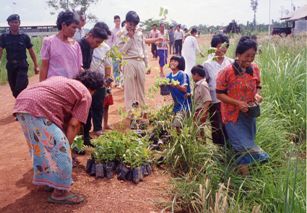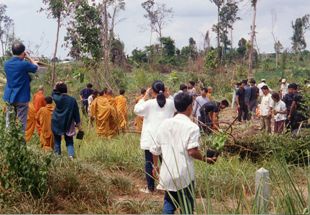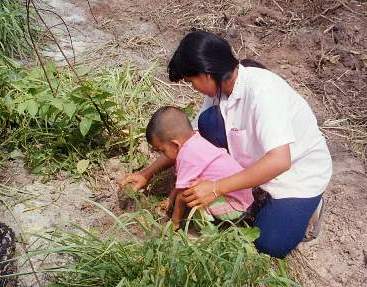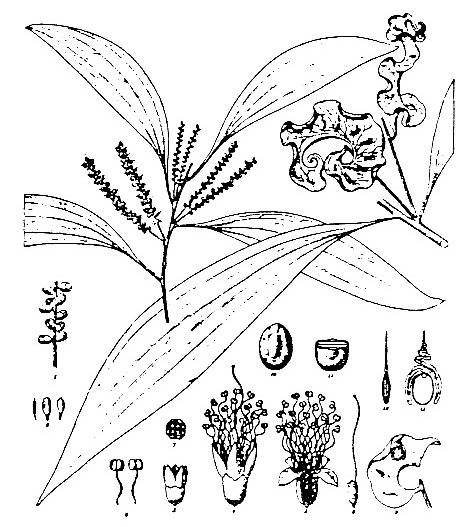


Acacia auriculiformis
Wattle
 Origin
Origin
Australia and Oceania, including Papua New Guinea
Ecology
Annual rainfall: 10003000mm.
Normal temperature range: 2232°C
Altitude range: 0700m
Seasonal adaptability: 46 months dry season
Soils: Can grow on soils ranging from highly acid to alkaline; from shallow clay soils to deep sandy loams.
Light requirement: Strong
Other site limitations: Low wind tolerance
Description
Height at maturity: 1525m.
Diameter at breast height (1.3m) at maturity: 5060cm.
Form: Poor; crooked stem, heavy branching.
Coppicing ability: Poorfair
Growth: 1518m in height, 1520cm in diameter in 1012cm in diameter in 1-12 year rotation.
Other: Fixes nitrogen,produces high levels of nitrogen even on poor soils.
Primary advantages
Good pulp production on highly infertile sites with pH as low as 3.0 oron soils as shallow as 20cm also can shade out imperata grass (Imperata cylindrica)
Primary disadvantages
Has strong allelopathic effects that limit tree-crop interactions.
Products and yields
Wood products: Poles, pulp, timber; 1215 m3/ha/year on 10-12 year rotation, higher or lower yields depending on rainfall and soil type.
Fuelwood: 4600-4800 kcal/kg, yields of 16 tons/ha/year; branches and leaves are a good source of small diameter fuelwood, yielding 4-6 tons/ha/year.
Fodder: Unpalatable for livestock after first year.
Other: Shade tree, tannin and gums.
Propagation
Planting seedlings is the best method but it is possible to sow seed directly.
Seed treatment
Some scarification of the seed is needed, hot water scarification is best.
Management
Pruning, coppicing, pollarding. For fuelwood and pulp, usually planted at 2x2m up to 4x4m. For better coppicing, cut stumps at 1m above ground. Removing lower branches of young plants may improvestem form.
Agroforestry uses
Limited by the allelopathic effects of prolific leaf liltter. Some uses include hedgerows on steep denuded lands. Uses as firebreak species in orchards, shades out imperata grass, thus reducing fire danger. Not recommended for growing close to food crops